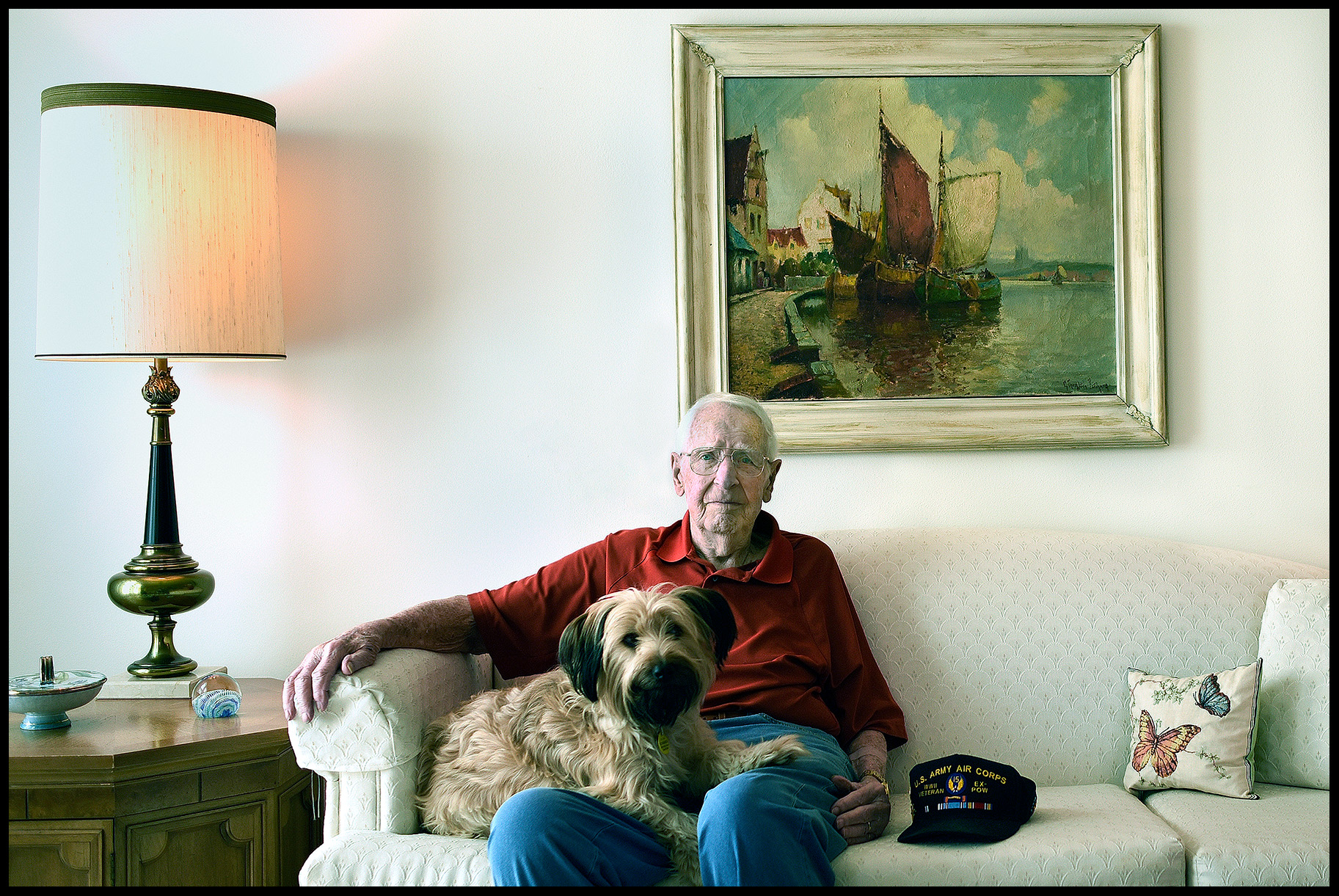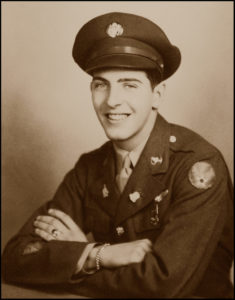
Jim Kirk
Ball turret gunner
on B-27
Jim Kirk
Staff Sgt. U.S. Army Air Corp
1943–1945

Pvt. Jim Kirk
Miami, FL, 1944
The guards marched us out of camp and we began what became known as “The Other Death March”. It was 6 February 1945, right in the middle of the Battle of the Bulge winter with the high temperature some days of 15 degrees. We marched nearly 600 miles in 86 days.
I grew up in Dearborn, Michigan, went to the University of Michigan my freshman year, and then joined the Army Air Corps in March, 1943. My dad wanted me to join the Marines, but I didn’t like how he ended up in the Marines. He was at Belleau Woods in WWI and lost his eye. He got a pension of $50 a month, and that’s what we lived on during the Depression. I went to boot camp in Florida, radio school in St. Louis, and then to Fort Myers for gunnery school. There we formed a crew, got our airplane and went overseas. I became a ball turret gunner on a B-17.
In June, 1944 I was assigned to the 15th Air Force, the 2nd Bomb Group in Foggia, Italy. We flew a mission every day until our 27th mission in August when we were shot down. The Hungarians picked us up, and the Germans took us to the Hungarian state prison and put us in solitary confinement. They would take us out and interrogate us. It was a terrible experience because I never saw fellow POWs. I ended up counting bed bugs. One day, I got down on my knees and said, ‘Good Lord, if you get me out of here, I will remember you always for the rest of my life.’ He did, and I did. Finally, after a month, we were transferred to Stalag Luft IV in northern Poland.
After six months in the prison camp, the allies were closing from the west and the Russians from the east. The guards marched us out of camp and we began what became known as “The Other Death March”. It was 6 February 1945, right in the middle of the Battle of the Bulge winter with the high temperature some days of 15 degrees. We marched nearly 600 miles in 86 days.
It was dreadful what we went through on this march. We started out with 6,000 men; I think we ended up with around 3,000. Someone would drop out and then you’d hear a gun shot. A lot of them just gave up. Every day on that march, I had to scrounge for food. Whatever I could find, if it was edible, I ate. It was one of those things you could never prepare for. Who ever heard you could live off the land for three months with no food and no clothes, and walk every day? I had the clothes on my back that I flew in, that’s all. I went from 157 to 97 pounds. What kept me going is that I wanted to survive; I just wanted to live.
The Russians liberated us, put us in a compound, and were holding us for money. They held us for two or three weeks. We got the word that they were taking us to Russia. We didn’t want any of that. One of my buddies spoke a little Russian and we decided to just walk out and head west. We had to scrounge again. This was Russian-held country. They were a rough group, raping and killing. We would run into them, and my friend saved our lives many times.
Three weeks later, we crossed the Elbe River and met troops from the U.S. Army. Oh, that was good! We went into Camp Lucky Strike where there were a lot of GI’s waiting to go home. After about a month, a big caravan came into camp. It was Ike. He got on a jeep and told us, ‘Boys, you’re going home.’
I came home, enrolled in college at Ohio Wesleyan, met my future wife, graduated in 1949, and got married. Three years later we came to San Antonio to learn the pharmaceutical business. I worked all over Texas calling on dermatologists for Texas Pharmaceutical. They were bought by Warner Lambert in 1978 and they wanted everyone to move to New York. We didn’t want to go. We stayed, I messed around with real estate, and after a while I just retired. I said to heck with it, I wanna play golf. We’ve been married for 68 years. {02-05-2016 • San Antonio, TX}